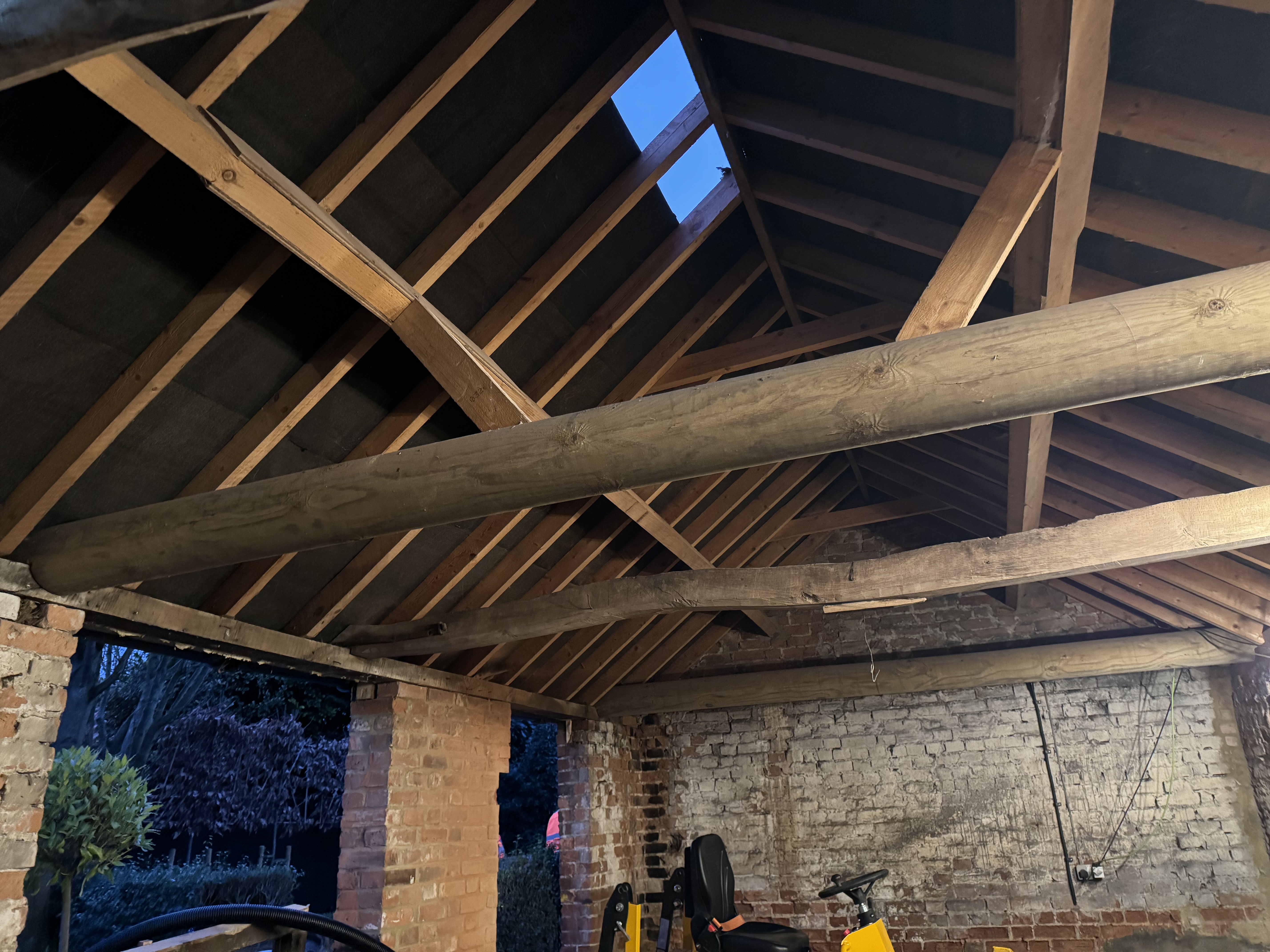Hand cut roof
 A Hand cut roof is defined as a roof that is formed on site from indiviual timber elements.
A Hand cut roof is defined as a roof that is formed on site from indiviual timber elements.
Traditional hand cut roofs are predominantly formed of common rafters that span from a ridge board to purlin (singlular or multiple) to eaves level. The purlin is usually supported from a high level binder, with notch to accept the purlin or it is supported off raking purlin props, bearing to notches in ceiling joists. Where a high level binder suppports the purlin, the binder is usually affixed back to a rafter pair, with the rafters being larger than the common rafters, due to the additional point load from the binder. Where purlin props support the binder, they bear -at an angle, perpendicular to the pich of the roof- into a notch set in a ceiling joist.
An alternative to the above is the support of timber purlins off timber trusses, set at suitable centres. The trusses however are not formed in-situ and are instead lifted into position, prior to "hand cutting" the remainder of the roof into place.
Purlins are typically "Scarf jointed" at the head of supports.
The aim of a traditional hand cut roof is to split forces into Horizontal and vertial components, so that primary supporting elements (Binder/ rafter pairs) or ceiling joists do not have to carry the full load in bending/ flexure, thus reducing section sizes.
Featured articles and news
RTPI leader to become new CIOB Chief Executive Officer
Dr Victoria Hills MRTPI, FICE to take over after Caroline Gumble’s departure.
Social and affordable housing, a long term plan for delivery
The “Delivering a Decade of Renewal for Social and Affordable Housing” strategy sets out future path.
A change to adoptive architecture
Effects of global weather warming on architectural detailing, material choice and human interaction.
The proposed publicly owned and backed subsidiary of Homes England, to facilitate new homes.
How big is the problem and what can we do to mitigate the effects?
Overheating guidance and tools for building designers
A number of cool guides to help with the heat.
The UK's Modern Industrial Strategy: A 10 year plan
Previous consultation criticism, current key elements and general support with some persisting reservations.
Building Safety Regulator reforms
New roles, new staff and a new fast track service pave the way for a single construction regulator.
Architectural Technologist CPDs and Communications
CIAT CPD… and how you can do it!
Cooling centres and cool spaces
Managing extreme heat in cities by directing the public to places for heat stress relief and water sources.
Winter gardens: A brief history and warm variations
Extending the season with glass in different forms and terms.
Restoring Great Yarmouth's Winter Gardens
Transforming one of the least sustainable constructions imaginable.
Construction Skills Mission Board launch sector drive
Newly formed government and industry collaboration set strategy for recruiting an additional 100,000 construction workers a year.
New Architects Code comes into effect in September 2025
ARB Architects Code of Conduct and Practice available with ongoing consultation regarding guidance.
Welsh Skills Body (Medr) launches ambitious plan
The new skills body brings together funding and regulation of tertiary education and research for the devolved nation.
Paul Gandy FCIOB announced as next CIOB President
Former Tilbury Douglas CEO takes helm.
UK Infrastructure: A 10 Year Strategy. In brief with reactions
With the National Infrastructure and Service Transformation Authority (NISTA).






















